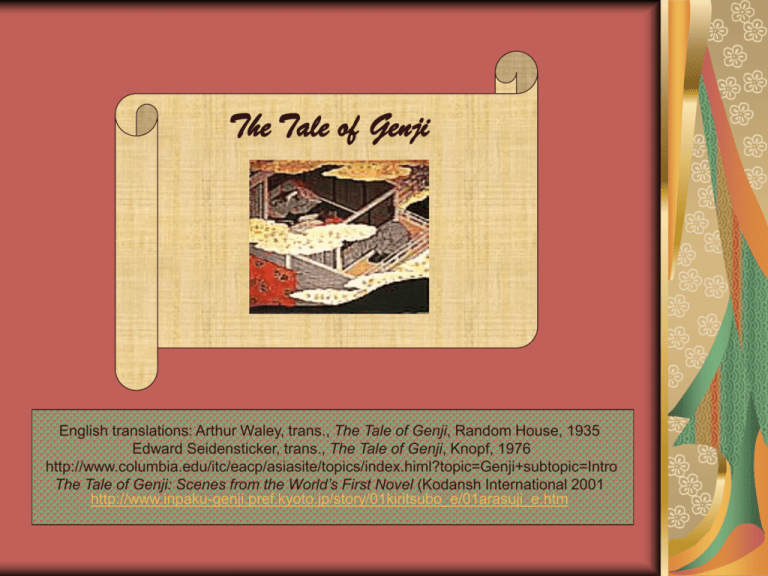
Their sleeves became a courting device, as it's often the first glimpse a man would get of a woman. Adult women spent much of their lives hidden behind screens and blinds (though men could, in most cases, come behind screens as they saw fit) and wore layered robes with flowing sleeves. Life at court was extremely far removed from the lives that lower-class Japanese people led. The Fujiwara clan held much of the power at court most emperors' mothers were from the Fujiwara family and Murasaki Shikibu herself was a part of the family, as well as women in the novel such as Kokiden. It encompasses the height of the Japanese imperial court, which Genji describes in detail, and is also known for female authors' literary and poetic works.

The Heian period in Japan spanned from 794-1185 BCE and is considered the last division of classical Japanese history. He's known for translating a number of seminal Japanese novels and his translations of modern Japanese works helped him earn the Nobel Prize in Literature in 1968. An American, Seidensticker had learned Japanese during World War II and spent several decades after the war living in Japan. Edward Seidensticker embarked upon translating Murasaki's work in the 1970s with the goal of condensing Arthur Waley's six-volume translation of Genji. During her time at court, she covertly taught the Empress Chinese writing, which, according to her diary entries and those of several female contemporaries, was considered extremely scandalous. There, she served until at least 1014 and possibly until 1025 the exact year of her death is unknown. Murasaki began writing The Tale of Genji around the time of her husband's death and continued to write chapters after she was sent to serve as a lady in waiting at the Empress Shōshi's court. She had one daughter before her husband's death two years later.



What’s more, rather than remain with her mother and marry as a teen, Murasaki accompanied her father when he went to Echizen Province as a governor and didn't marry until 998 at age 25. Though women at the time were forbidden from learning Chinese, Murasaki did-and proved an adept student. Raised by a respected scholar of poetry and Chinese classics, Murasaki Shikibu had an extremely unconventional upbringing.


 0 kommentar(er)
0 kommentar(er)
